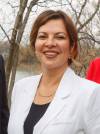Here’s how to vote in today’s federal election
Advertisement
Read this article for free:
or
Already have an account? Log in here »
To continue reading, please subscribe:
Monthly Digital Subscription
$0 for the first 4 weeks*
- Enjoy unlimited reading on winnipegfreepress.com
- Read the E-Edition, our digital replica newspaper
- Access News Break, our award-winning app
- Play interactive puzzles
*No charge for 4 weeks then price increases to the regular rate of $19.00 plus GST every four weeks. Offer available to new and qualified returning subscribers only. Cancel any time.
Monthly Digital Subscription
$4.75/week*
- Enjoy unlimited reading on winnipegfreepress.com
- Read the E-Edition, our digital replica newspaper
- Access News Break, our award-winning app
- Play interactive puzzles
*Billed as $19 plus GST every four weeks. Cancel any time.
To continue reading, please subscribe:
Add Free Press access to your Brandon Sun subscription for only an additional
$1 for the first 4 weeks*
*Your next subscription payment will increase by $1.00 and you will be charged $16.99 plus GST for four weeks. After four weeks, your payment will increase to $23.99 plus GST every four weeks.
Read unlimited articles for free today:
or
Already have an account? Log in here »
Hey there, time traveller!
This article was published 28/04/2025 (208 days ago), so information in it may no longer be current.
OTTAWA – On Monday, voters across the country will cast their ballots send 343 members of Parliament to Ottawa.
Polling stations will be open for 12 hours on election day. Voting hours staggered by time zone so that the majority of results are available at approximately the same time across the country, Elections Canada says.
Polls will open from 7 a.m. to 9:30 a.m. depending on the region and will close between 7 p.m. and 9:30 p.m.

Voters can find their polling station and its hours on their voter information card. Voting hours are also posted online at elections.ca.
Elections Canada says peak voting times on election day are usually early morning and after 4 p.m. Polls tend to be least busy between noon and 4 p.m.
In order to vote in the federal election, people will need an accepted form of identification, which could include:
— a driver’s licence or other government-issued card with photo, name and current address
— two pieces of ID, including at least one with a current address — for instance, a voter identification card and bank statement or a utility bill and student ID card.
People without ID can still vote if they declare their identity and address in writing and have someone who is assigned to their polling station and can vouch for them. That person must be able to prove their identity and address.
If someone hasn’t yet registered to vote, they can still register when they go to vote at their assigned polling station.
Elections Canada says that, according to preliminary estimates, a record number of people cast a ballot over the four days of advance polling over the Easter weekend. It reports that 7.3 million people voted at advance polls in this election, a 24 per cent increase from 2021.
B.C. and Atlantic Canada saw the biggest spikes in the number of people voting in advance polls this year, Elections Canada reports.
Elections Canada said about 75,000 students voted early on campus.
This report by The Canadian Press was first published April 28, 2025.


















